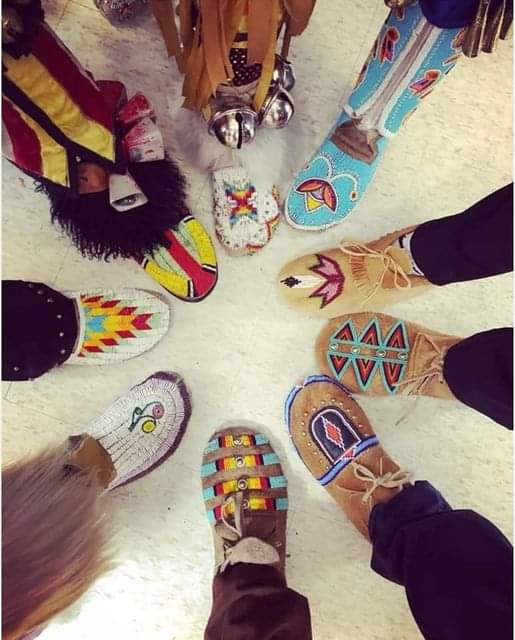Beyond the Surface: Disentangling Niceness from Kindness through an Indigenous Lens
In the tapestry of human interactions, the threads of ‘niceness’ and ‘kindness’ are often intertwined, yet distinctly different in their essence and implications. This article endeavours to dissect these concepts, exploring their nuanced differences and the societal perceptions surrounding them. This exploration is particularly poignant in the context of Indigenous cultures, where relationality and community are central, offering a unique lens through which to understand these behaviours.
Understanding Niceness: The Facade of Pleasantness
Niceness, in its most basic form, can be seen as a social strategy. It is the act of being pleasant, agreeable, and accommodating in social interactions, often motivated by a desire to be liked, to avoid conflict, or to conform to social norms. Niceness is externally driven, reflecting an adherence to societal expectations and often, a superficial level of interaction.
In Indigenous cultures, particularly among Métis communities, there is a strong emphasis on communal harmony and respect. However, this respect is deeply intertwined with authenticity and a sense of genuine community engagement. Niceness, when it veers towards inauthenticity or superficiality, can be at odds with these cultural values.
Kindness: A Deeper Act of Empathy and Compassion
Kindness, by contrast, is inherently a more profound and empathetic behavior. It stems from a genuine desire to positively impact another person’s life, driven by empathy, compassion, and a deep understanding of the other’s needs. Kindness is an internally driven act, often requiring a certain level of personal sacrifice or effort.
In the context of Indigenous perspectives, kindness is akin to the principle of wahkôhtowin, a Cree term encapsulating the interconnectedness and relationships among all beings. Kindness, in this view, is an expression of this deep relational understanding and a commitment to the well-being of the community and its members.
The Intersection of Niceness and Kindness in Social Dynamics
The distinction between niceness and kindness becomes particularly evident in complex social dynamics. Niceness, while it can facilitate smooth social interactions, often lacks depth and can sometimes be manipulative or self-serving. For example, a person might be nice to gain favour or to avoid confrontation, without any real concern for the other’s welfare.
Kindness, however, is rooted in a genuine concern for others. It may not always be accompanied by pleasantness or agreeability, particularly when difficult truths need to be addressed for the greater good. In Indigenous methodologies, this aspect of kindness aligns with the concept of speaking with a “good heart,” where honesty is valued over superficial harmony.
The Role of Cultural Context in Defining Niceness and Kindness
Cultural contexts play a significant role in how niceness and kindness are perceived and valued. In many Western societies, where individualism is predominant, niceness is often seen as a necessary trait for social and professional success. However, this can lead to a culture where surface-level interactions are normalized, sometimes at the expense of deeper, more authentic connections.
In contrast, Indigenous cultures, with their emphasis on community and relationality, place a higher value on kindness. This is not to say that niceness is disregarded, but it is seen as secondary to the deeper, more meaningful engagements that kindness fosters. The Indigenous perspective thus offers a critical lens through which to reevaluate the emphasis on niceness in mainstream culture.
Niceness vs. Kindness in Personal Development and Growth
The journey from niceness to kindness can be seen as a path of personal growth and development. Moving beyond the desire to merely appear pleasant or agreeable, to a place of genuine empathy and compassion, is a sign of emotional and spiritual maturity. This path aligns with the Indigenous understanding of personal and communal growth, where individual actions are always considered in relation to their impact on the community and the natural world.
Conclusion: Embracing Kindness in a World Obsessed with Niceness
In conclusion, while niceness and kindness may seem similar on the surface, their underlying motivations and impacts are profoundly different. Niceness, driven by external factors and often lacking depth, contrasts sharply with the empathetic, compassionate nature of kindness. In a world increasingly focused on surface-level interactions, there is a need to shift the focus towards kindness, with its roots in genuine concern and empathy for others. This shift not only aligns with Indigenous values of community and relationality but also fosters a more authentic, connected, and compassionate society.
In embracing kindness, we embrace a way of being that transcends superficial interactions, fostering a world where relationships are built on deep understanding, empathy, and a genuine desire for the well-being of all.
For more information, register for the Reconciliation Master class. Press here for more information.





